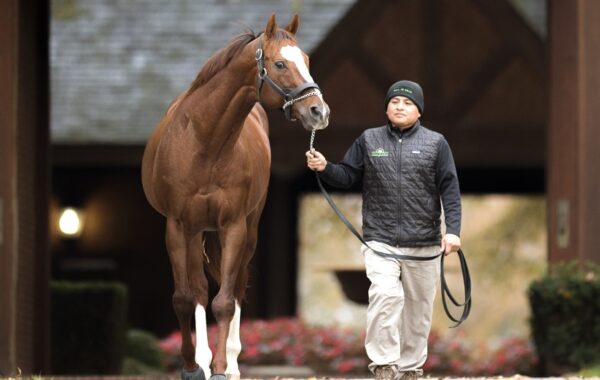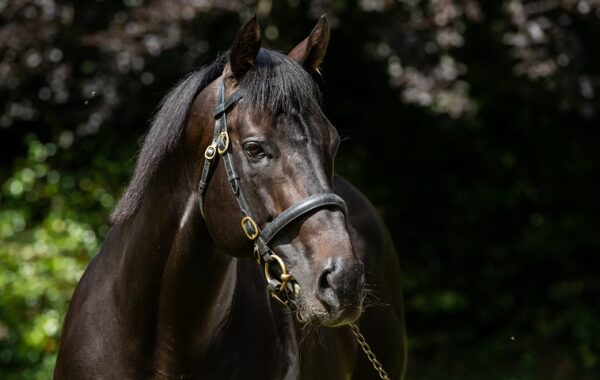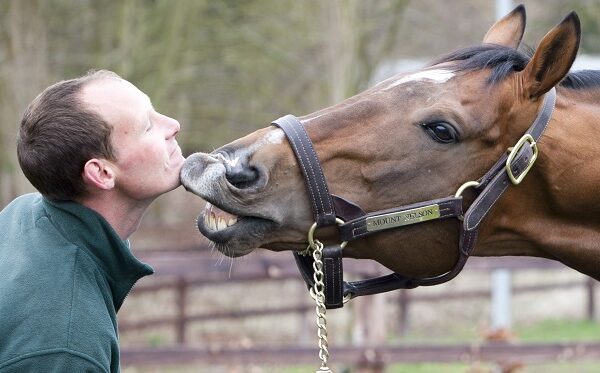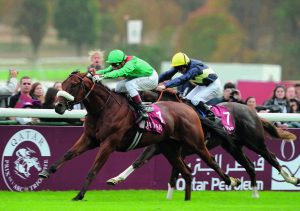History teaches us that the truly great racehorse is a rare creature, so rare that a decade may pass with only one achieving the superstar status conferred by a rating in the 140s. In Europe the 1940s had Tudor Minstrel, the 1950s Ribot and the 1960s Sea-Bird. Each stood out as an exceptional performer, clearly superior to all others of their era.
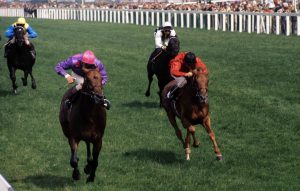
Brigadier Gerard: beaten only once in his illustrious career
So what are the odds against two truly great horses appearing on the turf at the same time? There is only one such example, and in 2018 we celebrate the 50th anniversary of the births of the unique pair who graced our racecourses for three seasons in the early 1970s. Those of us who witnessed their achievements, including the one occasion when they featured in direct competition, were granted a special privilege denied to those of other generations. There may never be a comparable occurrence.
The pair of bay colts were born 11 days apart on opposite sides of the Atlantic, Mill Reef on February 23 in America, Brigadier Gerard on March 4 in England. The former was bred by the fabulously wealthy Paul Mellon, whose Rokeby Farms in Virginia were home to a broodmare band of outstanding quality, while the latter was the product of a small Berkshire stud owned by John Hislop, a former champion amateur rider best known as a journalist and author of books on aspects of racing and breeding.
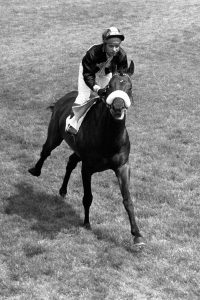
Mill Reef: brilliant Derby winner in 1971
Mill Reef was regally bred, by Nasrullah’s son Never Bend out of a mare by leading broodmare sire Princequillo. Brigadier Gerard, by contrast, had an unpretentious background, being by a relatively cheap stallion in Queen’s Hussar from a workaday branch of the family tracing back to 1904 Filly Triple Crown heroine Pretty Polly.
Assessed solely on pedigree, the American-bred had to be considered the more likely to excel on the racecourse. Had they gone to auction as yearlings, they would have been valued very differently, but as it happened both were retained by their breeders and sent to stables in England, Mill Reef to Ian Balding’s Kingsclere yard, Brigadier Gerard to race in Jean Hislop’s colours with Dick Hern at West Ilsley.
American-bred more precocious
Mill Reef came to hand more quickly, sent out for his debut over five furlongs at Salisbury in mid-May, and he created an immediately favourable impression, trouncing a 9-2 on favourite in Fireside Chat who had previously won in good style at Newmarket. When he returned for an eight-length victory in the Coventry Stakes at Royal Ascot he was everyone’s idea of a future Classic contender.
Eight days after Mill Reef’s Ascot success Brigadier Gerard had his first start at Newbury, and it was his turn to floor an odds-on shot. Virtually friendless at 100-7 in a five-runner field, he surprised his connections with a five-length victory, but he surprised nobody eight days later when conceding weight to all nine rivals and collecting his second win by four lengths in the Champagne Stakes at Salisbury.
Mill Reef’s third race came in the Prix Robert Papin at Maisons-Laffitte and in a thrilling contest he failed by a short head to peg back a bigger rival in Newmarket-trained My Swallow, who was winning for the fourth time in as many starts. The Brigadier had his own third start in mid-August at Newbury, where he disposed of four inferiors in the Washington Singer Stakes, conceding 6lb to each of them, but no sooner had we got used to the idea that he might be a bit out of the ordinary than Mill Reef was back, giving an extraordinary display over heavy ground at York in the Gimcrack Stakes, splashing to a ten-length triumph. A month later, when not ridden to best advantage, it took him a while to overcome the good filly Hecla in the Imperial Stakes at Kempton, a one-length victory disappointing some of his supporters.
John Hislop, always of the view that a potential top-class three-year-old should be restricted to six furlongs in his first season, chose the most important juvenile event at the distance, the Middle Park Stakes, for Brigadier Gerard’s final start of the campaign, and it was an especially competitive renewal, with two other unbeaten colts, Mummy’s Pet and Swing Easy, preferred to him in the betting. He dented their reputations and enhanced his own, storming home with three lengths to spare. Mill Reef signed off for the season a fortnight later in the Dewhurst Stakes, outclassing Irish challengers Wenceslas and Lombardo.
Mill Reef went to Epsom and clearly relished the distance, winning in fine style, while the Brigadier waited for Ascot, where he landed the St James’s Palace Stakes by a mere head on a testing rain-affected surface
It had clearly been a good year for youngsters trained in England. Timeform rated My Swallow, who had completed the French juvenile Quadruple Crown, at 134, a pound in front of Mill Reef, who was himself a pound ahead of Brigadier Gerard.
My Swallow had won a moderately-contested Usher Stakes at Kempton and Mill Reef a better edition of Newbury’s Greenham Stakes before the pair came out for the 2,000 Guineas in the company of Brigadier Gerard, who had not been seen since the Middle Park. The market favoured Mill Reef at 6-4, with My Swallow second choice at 2-1 and Brigadier Gerard easy to back at 11-2. The race proved a revelation, for no sooner had Mill Reef gained the upper hand over My Swallow than the Brigadier swept by them both and dashed clear to win by three lengths.
On what could be gauged from their pedigrees at the time, neither Mill Reef nor Brigadier Gerard was a certainty to stay the Derby trip, and the latter was not about to be asked the question, as his connections felt he was not yet ready for the test. Mill Reef went to Epsom and clearly relished the distance, winning in fine style, while the Brigadier waited for Ascot, where he landed the St James’s Palace Stakes by a mere head over Sparkler on a testing rain-affected surface.
The public was longing to see Mill Reef and Brigadier Gerard in competition again, but different routes were determined for the pair. Mill Reef slammed Caro in the Eclipse and Ortis in the King George before the Brigadier enjoyed a fruitful summer over a mile, collecting the Sussex Stakes, the Goodwood Mile and the Queen Elizabeth II Stakes by five lengths, ten lengths and eight lengths respectively.
Mill Reef’s autumn objective was the Arc, in which he confirmed his class with an authoritative victory over fillies Pistol Packer and Cambrizzia in course-record time. Brigadier Gerard was set a tough task for his last run at three, the Champion Stakes marking his first attempt at ten furlongs in the company of older horses proven at the distance. Just to make it a more daunting challenge, an already rain-sodden Rowley Mile was subjected to further heavy downpours immediately before the race. Ascot had indicated how soft ground inhibited the favourite’s action, and it did so again, but sheer courage enabled him to preserve his unbeaten record by a bare nostril over four-year-old Rarity.
There will be no comparable ‘double act’ in my lifetime. Maybe not in yours, either
At the end of their second season Mill Reef had won ten out of 12, while Brigadier Gerard was flawless after ten races. Confirming the exceptional qualities of both horses, Racehorses of 1971 celebrated them equally, assigning each a rating of 141.
Racegoers were promised further treats by the news that both horses would run again at four – with a possible bonus in that connections of both had designs on the Eclipse Stakes. It was asking too much that our highest hopes should be realised, but we could hardly complain about being short-changed.
Mill Reef was out early, proving himself at least as good as ever with an overwhelming ten-length triumph in the Prix Ganay, Brigadier Gerard coming back three weeks later for a workmanlike victory in the Lockinge Stakes at Newbury before registering win number 12 in the Westbury Stakes at Sandown, where the weights favoured all four of his opponents.
Bad weather hampered Mill Reef’s training in the run-up to Epsom, where he had little in hand over Homeric at the end of the Coronation Cup, and that turned out to be the last we saw of him. Ian Balding never had him quite to his satisfaction over the summer, and at the end of August came the devastating news that the colt had fractured his near-fore in a routine canter at Kingsclere.
Brigadier Gerard raced on, dominating in the Prince of Wales’s Stakes at Ascot, mastering soft ground in the Eclipse, proving his stamina for a mile and a half in the King George. The only flaw on his record came in an uncharacteristic dull effort behind Roberto in the Benson and Hedges at York, but normal service was resumed for a second Queen Elizabeth II success and the completion of another double, over Riverman in the Champion Stakes.
Mill Reef was rated 141 for a second time in Racehorses of 1972, while Brigadier Gerard’s mark rose to 144, placing him on a level with Tudor Minstrel and only one pound behind Sea-Bird, Timeform’s all-time champion up to that point.
There will be no comparable ‘double act’ in my lifetime. Maybe not in yours, either.



